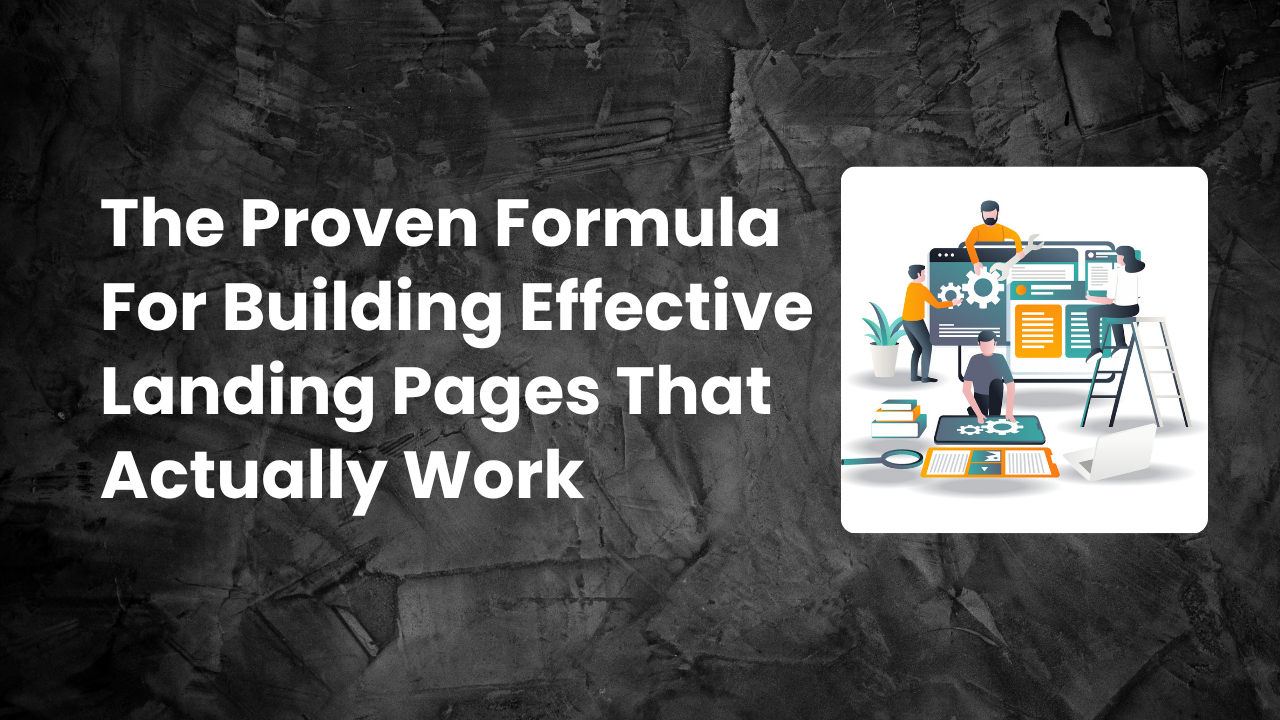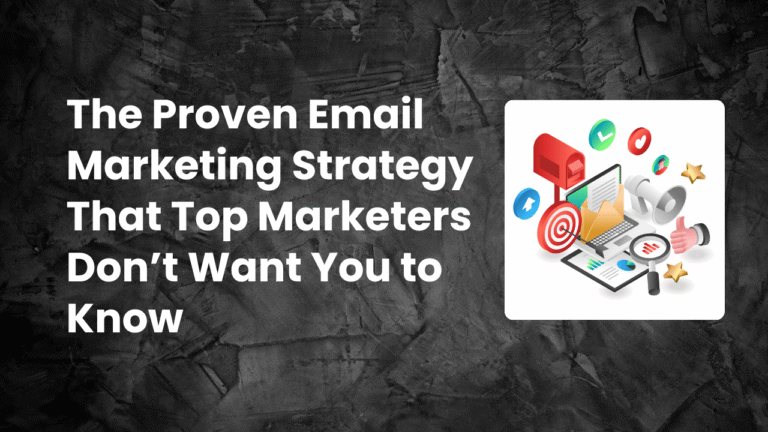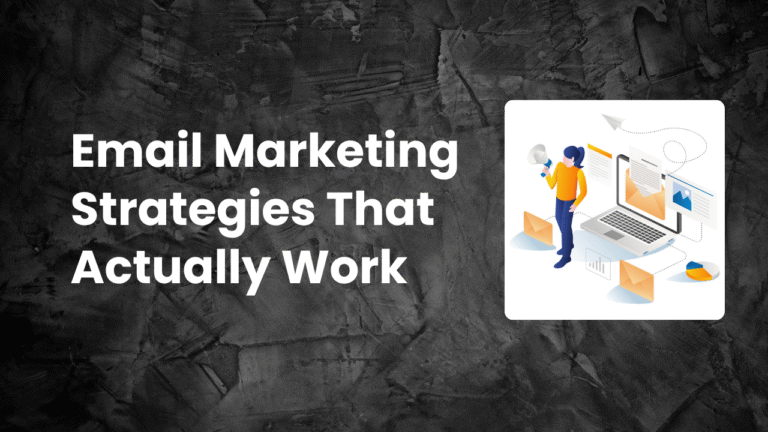Building effective landing pages is no longer optional in today’s digital marketing world—it’s a requirement. Whether you’re running a small business, launching a product, or growing an email list, your landing page is where users make the decision to either engage with you or leave forever.
Landing pages are the backbone of online conversions. Unlike a homepage or blog post, they are designed with one goal: to convert visitors into leads or customers. That laser-focused intent makes them one of the most powerful tools in your marketing arsenal.
The importance of landing pages is backed by solid numbers. According to HubSpot, businesses with 40 or more landing pages generate 12 times more leads than those with five or fewer (HubSpot Marketing Benchmarks). Even more interesting, Unbounce reports that the average landing page conversion rate across industries is 4.02%, but top performers see rates above 10%, meaning there’s massive room for improvement with the right strategy (Unbounce Conversion Report).
In this guide, we’re diving deep into the strategy, structure, and psychology behind building effective landing pages that convert. Whether you’re starting from scratch or looking to optimize an underperforming page, this post will help you understand what works, why it works, and how you can implement it immediately.
What Makes a Landing Page “Effective”?
Before we jump into tactics, let’s define what “effective” really means in the context of landing pages.
An effective landing page is not just well-designed or beautiful. It’s purposeful. It clearly communicates value, eliminates distractions, builds trust, and nudges visitors toward a single action—be it signing up, making a purchase, downloading a resource, or booking a demo.
Everything on the page should guide the visitor’s attention toward that goal. That means the layout, colors, copy, visuals, form fields, and call-to-action must work together in harmony. If a landing page looks good but doesn’t convert, it isn’t effective.
Building effective landing pages is about balance. You need clarity, persuasion, usability, and psychology—all working together. And above all, you need to keep the visitor’s experience front and center.
Start With a Clear Objective
The foundation of every effective landing page is a clear objective. You can’t optimize for conversions if you don’t know what action you want people to take.
Every element on the page should serve that one purpose. Are you collecting leads for a newsletter? Promoting a free trial? Selling a course? Offering a downloadable guide?
The more focused your goal, the more effective your page will be. Pages that try to do too many things at once often confuse the visitor and dilute the message. The result? Lower conversions.
Decide on your goal before you begin designing or writing. Make that goal the guiding principle for every element that follows.
Understand Your Target Audience
You can’t build an effective landing page without understanding who you’re building it for. Knowing your audience inside and out helps you tailor every detail—from the language you use to the offer you present.
What problems are they trying to solve? What objections might they have? What motivates them to act? What words do they use to describe their pain points?
Audience research doesn’t need to be complicated. Look at your current customers. Read reviews. Analyze support requests. Study forums or Reddit threads in your niche. All of these are gold mines for understanding the mindset of your ideal visitor.
The better you know your audience, the easier it becomes to write copy that feels personal, relevant, and convincing.
Craft a Compelling Headline
Your headline is the first impression. It’s what determines whether a visitor stays to read more or clicks away forever.
A great headline grabs attention and immediately communicates the core benefit of your offer. It should be clear, specific, and focused on the outcome the user wants.
Instead of a vague headline like “Welcome to Our Website,” aim for something like “Get Your Free 30-Day Meal Plan and Start Losing Weight Today.” The second headline speaks directly to the user’s desire and offers a tangible outcome.
Use emotional language where appropriate. People buy based on feelings, then justify with logic. If your headline resonates emotionally, you’re already ahead.
Write Copy That Converts
Landing page copy isn’t about being fancy or overly clever—it’s about being clear, concise, and compelling. Your copy should guide visitors through a logical journey: from understanding the problem to realizing your offer is the solution.
Begin with a powerful opening that mirrors the reader’s pain point or goal. Then present the solution—your product, service, or lead magnet. From there, dive into the benefits and address common objections. Finally, lead them to the call-to-action.
Use simple language. Write like you’re talking to one person, not a crowd. Avoid jargon or technical terms unless your audience expects them.
Focus on benefits over features. A feature tells what your offer does. A benefit tells what the visitor gains from it. Instead of saying “Includes 50 templates,” say “Launch your next campaign in minutes using our 50 plug-and-play templates.”
That small shift makes a big difference in perceived value.
Keep Design Simple and Focused
When building effective landing pages, simplicity is your best friend. A cluttered or confusing design distracts from your message and lowers your conversion rate.
Your layout should be clean, intuitive, and easy to scan. Use ample white space to let elements breathe. Stick to a single column format where possible, especially for mobile users.
Place the most important information above the fold—the visible area before scrolling. This includes your headline, subheadline, benefits, form or CTA, and any key trust signals.
Use contrasting colors for your call-to-action button so it stands out visually. And make sure that button text is specific: “Get My Free Ebook” is more effective than “Submit.”
Responsive design is non-negotiable. Over 55% of web traffic comes from mobile devices, so your landing page must look and function perfectly on every screen size (Statista).
Use Social Proof to Build Trust
Visitors are more likely to take action when they see others have already done so and had success. This is where social proof becomes powerful.
Social proof comes in many forms—customer testimonials, star ratings, case studies, logos of companies you’ve worked with, or even the number of downloads or signups.
For maximum impact, make your social proof specific. Instead of “Great service,” a testimonial like “I increased my leads by 63% after using this landing page template” is far more persuasive.
If you’re new and don’t have many testimonials yet, use credibility indicators like “As seen in,” trust badges, or guarantees to reassure users.
Add Visuals That Support, Not Distract
Images, videos, and graphics can make your landing page more engaging—but only if they reinforce your message. Every visual should serve a purpose.
Avoid generic stock photos. Use product images, mockups, screenshots, or explainer videos to make your offer tangible. If you’re offering a downloadable resource, show a preview. If it’s a service, show a walkthrough or real-life results.
Videos are especially effective. According to EyeView, landing pages with videos can increase conversions by up to 86% (EyeView Digital). Just make sure they’re short, high-quality, and relevant.
Don’t let visuals slow your page down, though. Fast-loading pages convert better. Compress files and use modern formats to maintain performance.
Optimize Your Form Fields
If your landing page includes a form, keep it short and simple. Every additional field increases friction and decreases conversions.
Only ask for the information you truly need. If you’re offering a free guide, an email address might be enough. If it’s a consultation or demo, you can ask for more details—but still, keep it reasonable.
Use clear, user-friendly labels and placeholder text. Don’t make users guess what you’re asking for. And always include a reassuring note about privacy if you’re collecting personal data.
If your form is long out of necessity, break it into steps or use a progress bar to reduce perceived effort. Forms should feel easy, not overwhelming.
Craft an Irresistible Call-to-Action
Your call-to-action (CTA) is where the magic happens. It’s what turns a visitor into a lead or customer. So don’t treat it as an afterthought.
Your CTA should be bold, visible, and specific. It should reinforce the benefit of clicking. For example, instead of “Download,” use “Get My Free Marketing Guide.” Instead of “Subscribe,” use “Send Me Weekly Growth Tips.”
Place your CTA button where it makes the most sense—above the fold and after your persuasive content. Repeating the CTA is okay, especially on long pages.
Use urgency or scarcity to nudge action when appropriate. Lines like “Offer ends soon” or “Only 3 spots left” can create a sense of “act now” without being pushy—if they’re honest.
Test, Measure, and Optimize
No landing page is perfect out of the gate. That’s why testing is a key part of building effective landing pages.
Use A/B testing to compare different versions of your page. Test one element at a time—headlines, CTA text, form placement, or colors—and measure what performs better.
Track metrics like:
- Conversion rate
- Bounce rate
- Time on page
- Scroll depth
Tools like Unbounce, Instapage, Google Optimize, or even basic Google Analytics can help you track user behavior and uncover improvement opportunities.
Small tweaks often make a big difference. Continual testing and optimization separate average pages from high-performing ones.
Speed and Security Matter Too
Beyond copy and design, performance matters. A slow or insecure page drives visitors away.
Page speed is not only a ranking factor for SEO but also a conversion killer. According to Google, 53% of mobile users abandon a page that takes more than 3 seconds to load (Think with Google).
Use fast, reliable hosting. Compress images. Minimize scripts. Enable browser caching. Use tools like GTmetrix or PageSpeed Insights to identify bottlenecks.
And don’t forget SSL encryption. Visitors are wary of pages that aren’t secure, especially when entering personal data. Make sure your page has HTTPS and displays the “secure” lock icon in the browser.
Common Mistakes to Avoid
When building effective landing pages, it’s just as important to know what not to do.
Avoid these common pitfalls:
- Using vague headlines
- Including too many CTAs or distractions
- Writing long, boring copy
- Asking for too much information too soon
- Failing to include social proof or trust elements
- Not optimizing for mobile
- Ignoring speed and performance
- Forgetting to test and iterate
Each of these mistakes chips away at your visitor’s confidence—and your chances of conversion.
Conclusion: Build With Purpose, Optimize With Precision
Building effective landing pages isn’t about luck or guesswork. It’s about intention, clarity, and constant refinement.
Every element of your landing page—from the headline and design to the form and CTA—plays a role in turning visitors into conversions. When you understand your audience, craft a compelling message, and deliver a seamless user experience, the results can be transformative.
High-converting landing pages are the product of good psychology, smart design, strong copy, and ongoing optimization. The good news? You don’t need to be a designer or a copywriter to create them. You just need to follow the principles outlined in this guide.
Your next landing page could be your best yet. Just make sure you build it with purpose.





